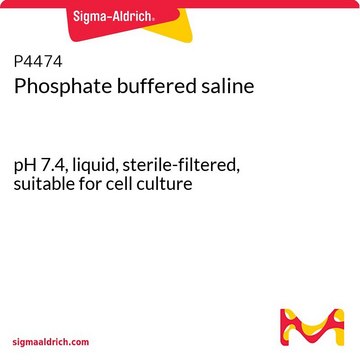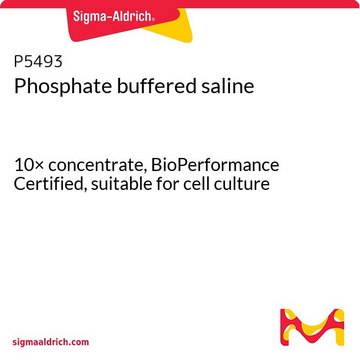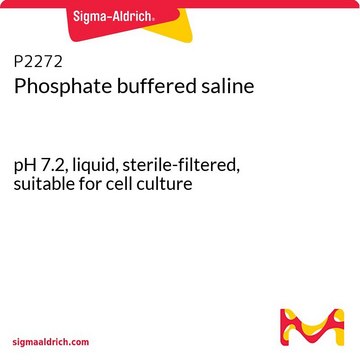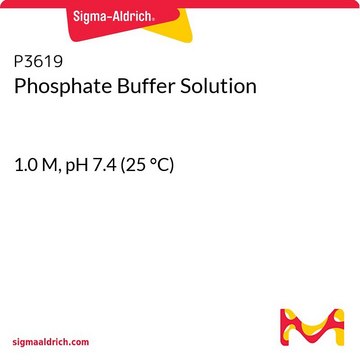806552
Phosphate Buffered Saline
pH 7.4, liquid, sterile-filtered, suitable for cell culture
Synonim(y):
Phosphate buffered saline, PBS
About This Item
Polecane produkty
sterylność
sterile-filtered
Formularz
liquid
metody
cell culture | mammalian: suitable
zanieczyszczenia
Endotoxin, tested
pH
7.4
Szukasz podobnych produktów? Odwiedź Przewodnik dotyczący porównywania produktów
Opis ogólny
Zastosowanie
- as a reagent in the isolation of human endometrial stem cell/stromal cells (hEnSCs) from the endometrium or menstrual blood
- has also been used to wash cells during immunofluorescence staining
- as a solvent for the glucose administered orally in the Glucose Tolerance Tests (GTTs)
Kod klasy składowania
12 - Non Combustible Liquids
Klasa zagrożenia wodnego (WGK)
nwg
Temperatura zapłonu (°F)
Not applicable
Temperatura zapłonu (°C)
Not applicable
Wybierz jedną z najnowszych wersji:
Masz już ten produkt?
Dokumenty związane z niedawno zakupionymi produktami zostały zamieszczone w Bibliotece dokumentów.
Klienci oglądali również te produkty
Protokoły
WST-1 assay protocol for measuring cell viability, proliferation, activation and cytotoxicity. Instructions for WST-1 reagent preparation and examples of applications. Frequently asked questions and troubleshooting guide for WST-1 assay.
Protokół testu WST-1 do pomiarów żywotności i cytotoksyczności komórek z instrukcjami przygotowania, zastosowaniami, często zadawanymi pytaniami i rozwiązywaniem problemów.
Protokół testu MTT do pomiaru żywotności, proliferacji i cytotoksyczności komórek. Instrukcje przygotowania odczynnika MTT i przykłady zastosowań.
Nasz zespół naukowców ma doświadczenie we wszystkich obszarach badań, w tym w naukach przyrodniczych, materiałoznawstwie, syntezie chemicznej, chromatografii, analityce i wielu innych dziedzinach.
Skontaktuj się z zespołem ds. pomocy technicznej














